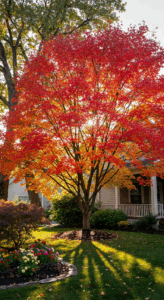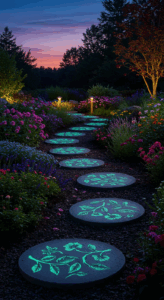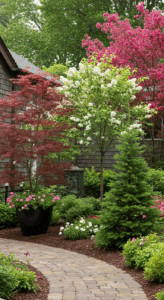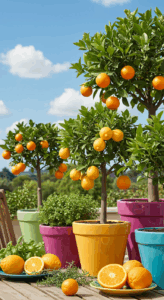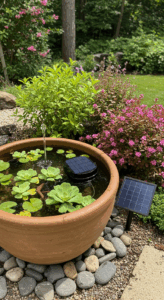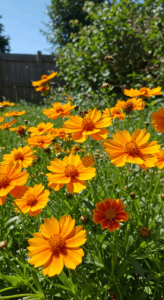1. The Potting Paradigm: Why Choose Container Gardening?

Container gardening offers an accessible and flexible approach to growing vegetables, especially for those with limited space, such as urban dwellers or individuals with small backyards. It allows you to cultivate a variety of vegetables right on your balcony, patio, or even windowsill. The ability to control soil quality, moisture levels, and sunlight exposure enhances growth potential, making it easier to manage the specific needs of different plants. Additionally, container gardening can help deter pests and diseases by keeping plants isolated and can be easily rearranged to optimize sunlight. With a wide array of pots and containers available, gardeners can personalize their space while enjoying fresh produce right at their fingertips.
2. Starting Strong: Essential Supplies for Your Container Garden
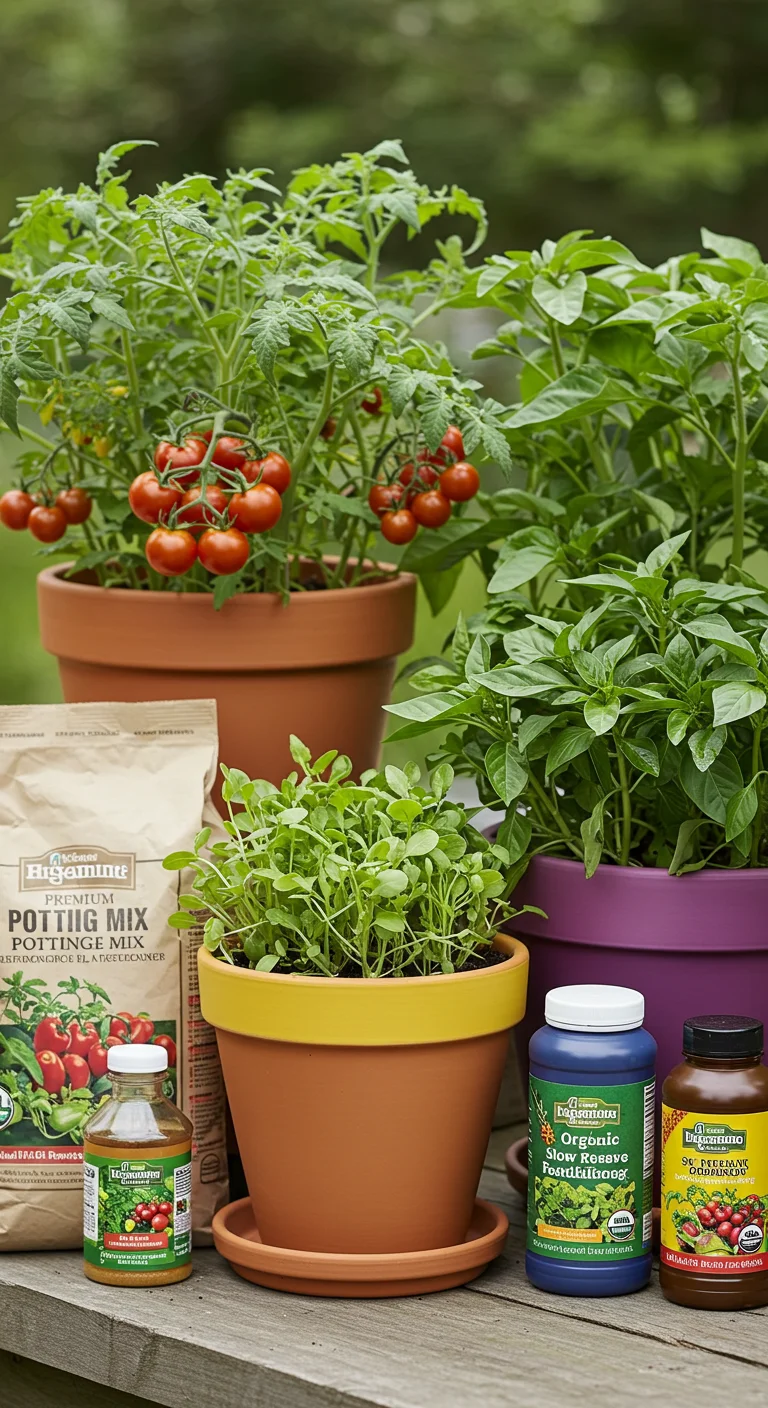
Starting strong with the right supplies is crucial for a thriving container garden. Begin with high-quality pots that offer good drainage, such as terracotta or plastic, ensuring they are at least 12 inches deep for most vegetables. Choose a premium potting mix designed for container gardening, as it retains moisture and provides essential nutrients. Don’t forget to include fertilizer; a slow-release organic option will nourish your plants throughout their growth cycle. Additionally, consider investing in saucers or trays to catch excess water and prevent mess. Lastly, keep a watering can or a hose with a spray attachment handy for easy and efficient watering. These essentials will lay a solid foundation for your vegetable garden, promoting healthy growth and abundant harvests.
3. Leafy Greens Galore: Growing Lush Lettuce in Pots

Growing lush lettuce in pots is an excellent way to enjoy fresh greens right at home, especially for those with limited space. Start by selecting a container that is at least 6-12 inches deep to allow for healthy root growth. Use a quality potting mix that retains moisture but drains well, and consider adding organic compost for extra nutrients. Choose a sunny spot, as lettuce thrives in cooler weather and requires about 6 hours of sunlight daily. Sow seeds directly into the pot or start with seedlings for quicker results. Keep the soil consistently moist but not soggy, and be vigilant against pests. Harvest leaves regularly to encourage new growth, and enjoy the satisfaction of fresh, homegrown lettuce in your salads and sandwiches.
4. Potatoes on the Patio: How to Cultivate Tasty Tubers
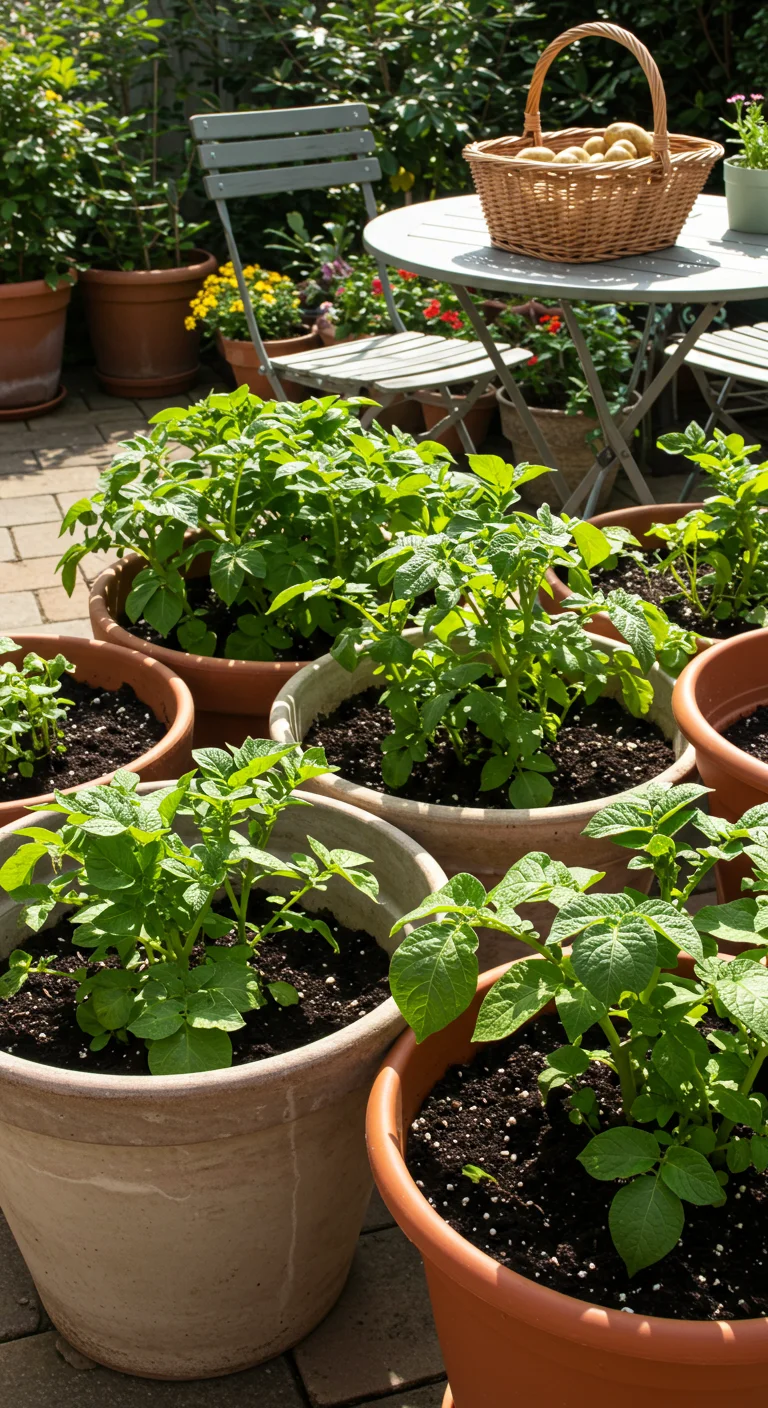
Cultivating potatoes on your patio is an excellent way to enjoy fresh, homegrown tubers without needing a large garden space. Start by selecting a container that is at least 12 inches deep and ensure it has adequate drainage holes. Fill it with a quality potting mix, and plant seed potatoes about 4 inches deep, spaced 12 inches apart. As they grow, regularly add more soil to cover the stems, a process known as hilling, which encourages more tuber production. Water consistently, keeping the soil moist but not soggy, and place the container in a sunny spot that receives at least 6-8 hours of sunlight daily. Harvest your potatoes after the foliage dies back, usually 70-90 days after planting, and enjoy the fruits of your labor right from your patio!
5. Sweet Success: The Art of Growing Strawberries in Containers

Growing strawberries in containers is a rewarding endeavor that allows you to enjoy fresh, sweet berries even in limited spaces. To get started, choose a large pot or hanging basket with good drainage, as strawberries thrive in well-aerated soil. A mix of potting soil and compost will provide essential nutrients. Plant bare-root or potted strawberries in spring, spacing them about 12 inches apart to allow for healthy growth. Ensure your containers receive at least 6-8 hours of sunlight daily for optimal fruit production. Regular watering is crucial, especially during dry spells, but avoid waterlogging. Fertilizing with a balanced fertilizer every few weeks will promote healthy blooms and fruit. With proper care, you can harvest delicious strawberries all summer long, making container gardening a sweet success!
6. Spice It Up: Container Gardening with Hot Peppers
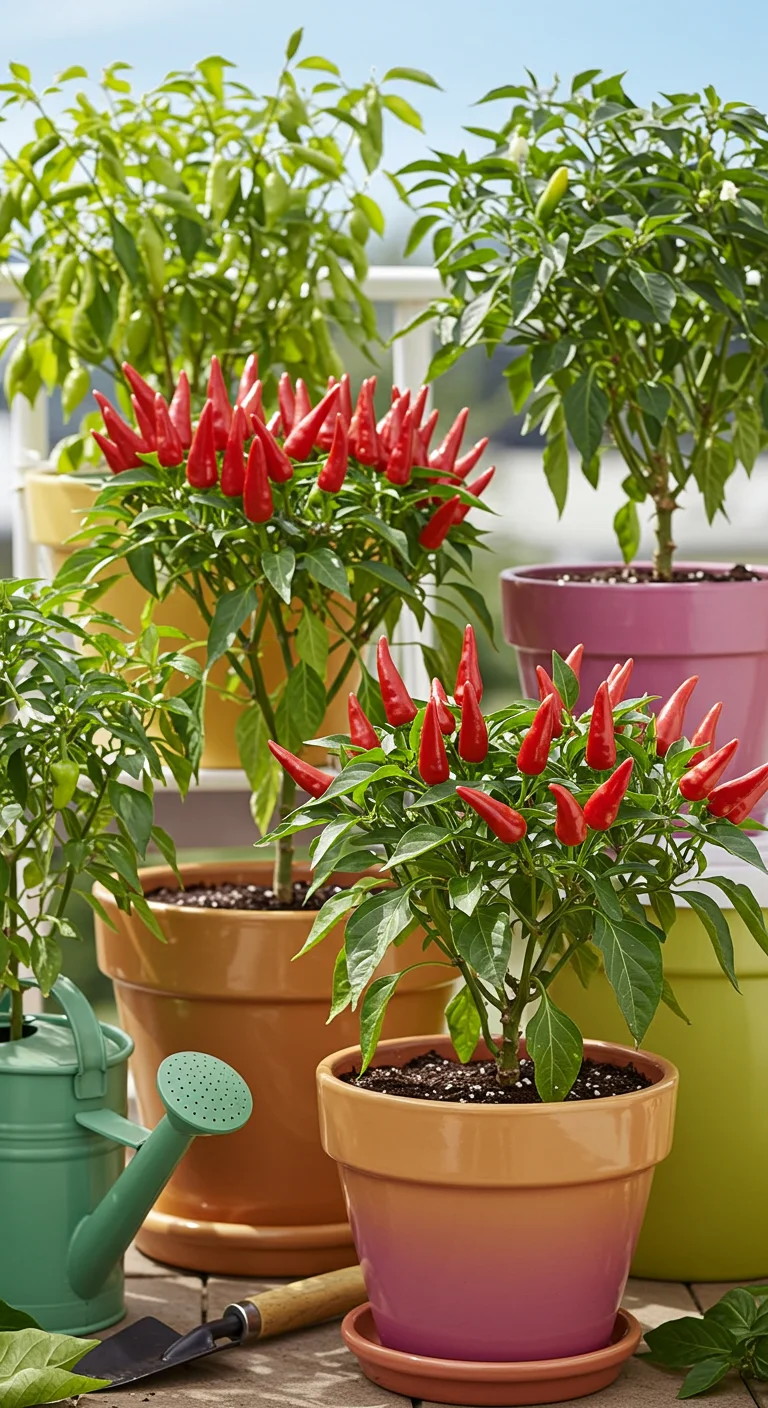
Container gardening with hot peppers is a fantastic way to add a spicy kick to your culinary adventures. Choose varieties like jalapeños, habaneros, or serranos, which thrive in pots and can be easily managed. Use well-draining potting mix and select containers that are at least 5 gallons to allow ample root growth. Position your containers in a sunny spot, as hot peppers require at least 6-8 hours of sunlight daily. Water them regularly, but ensure the soil dries out between watering to prevent root rot. Fertilize with a balanced fertilizer every few weeks to promote vigorous growth and abundant fruiting. With a little care, you can cultivate a vibrant display of colorful peppers that will not only spice up your dishes but also enhance your outdoor space aesthetically.
7. Tomato Time: Tips for Thriving Container Tomatoes
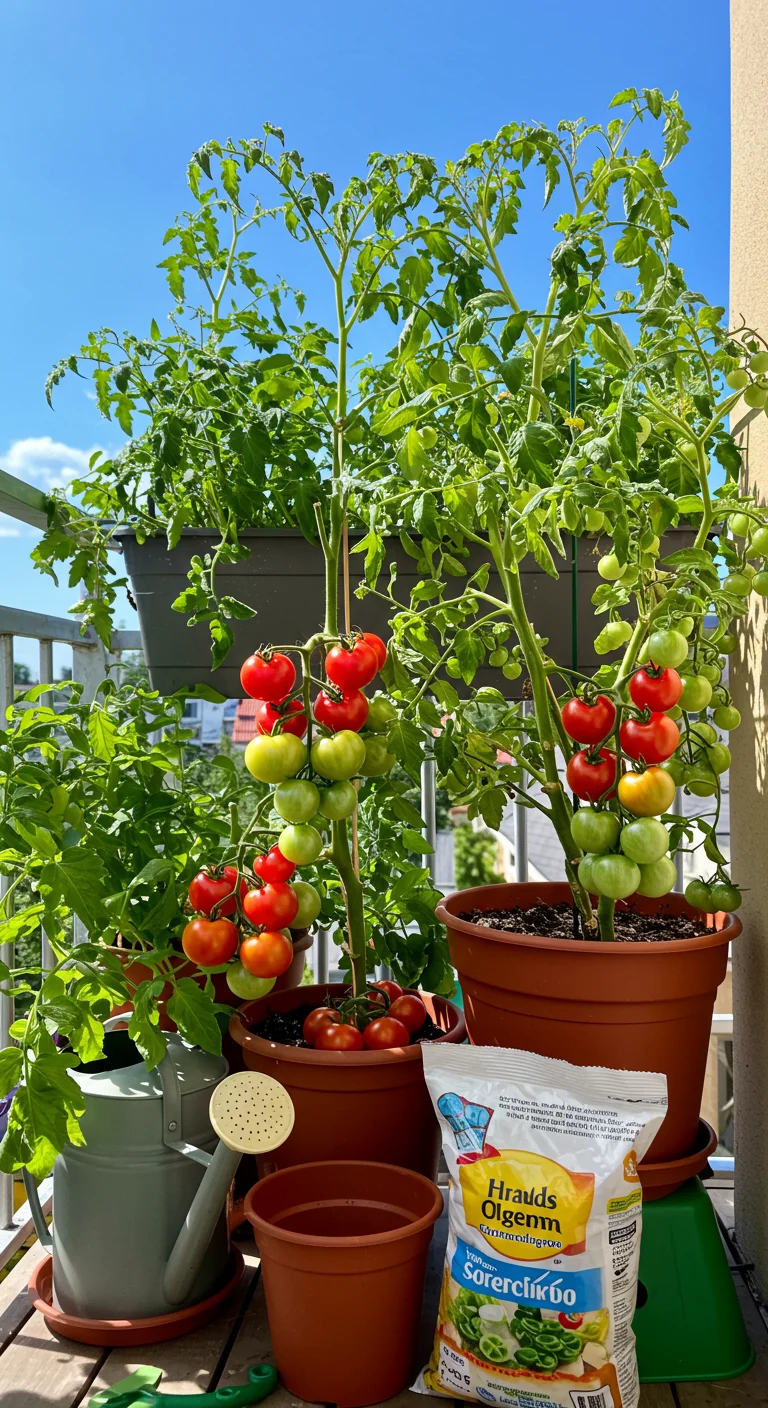
Container tomatoes thrive with the right care and conditions. Choose determinate varieties, such as ‘Patio Princess’ or ‘Tiny Tim’, which are compact and perfect for pots. Ensure your containers are at least 5 gallons and have good drainage. Use high-quality potting soil enriched with organic matter to provide essential nutrients. Position your plants in a location that receives 6 to 8 hours of sunlight daily, and water them consistently, allowing the top inch of soil to dry between waterings. Fertilize every few weeks with a balanced, water-soluble fertilizer to encourage fruiting. Additionally, consider using stakes or cages to support your tomato plants as they grow, preventing them from sprawling out of the container. With these tips, you can enjoy a bountiful harvest of fresh tomatoes right from your balcony or patio.
8. Carrots in Containers: A Rooted Adventure
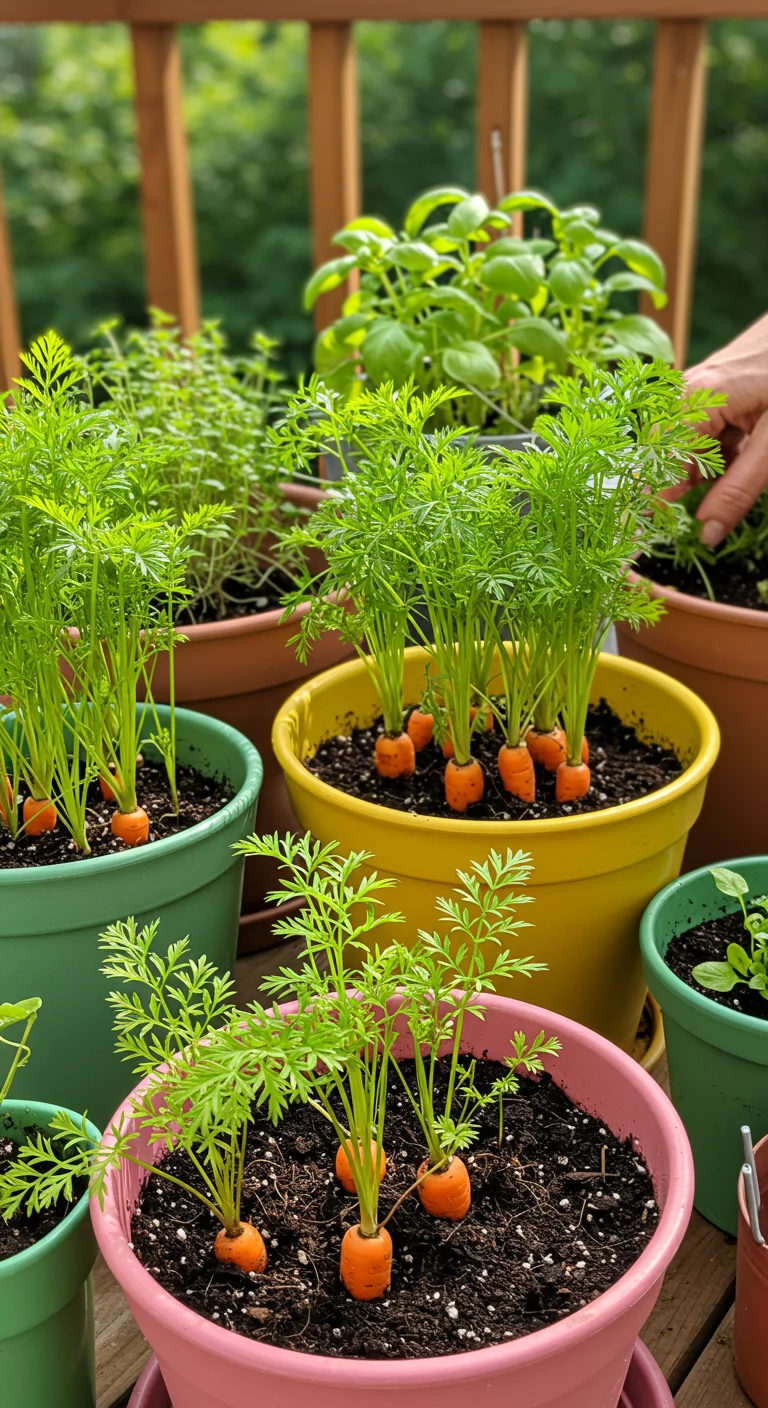
Carrots are an excellent choice for container gardening, offering a fun and rewarding way to grow these crunchy root vegetables even in limited spaces. To successfully cultivate carrots in pots, select deep containers—at least 12 inches deep—to accommodate their long taproots. Use a loose, well-draining potting mix enriched with organic matter for optimal growth. Plant carrot seeds directly in the container, spacing them about 2 inches apart, and keep the soil consistently moist until germination. Carrots thrive in full sun, so place your pots in a sunny spot and consider companion planting with herbs like basil to deter pests. By harvesting at various stages, you can enjoy a continuous supply of fresh, homegrown carrots throughout the season, making your container garden a rooted adventure that’s both educational and delicious.
9. Beans on the Balcony: Vertical Gardening with Pole Beans
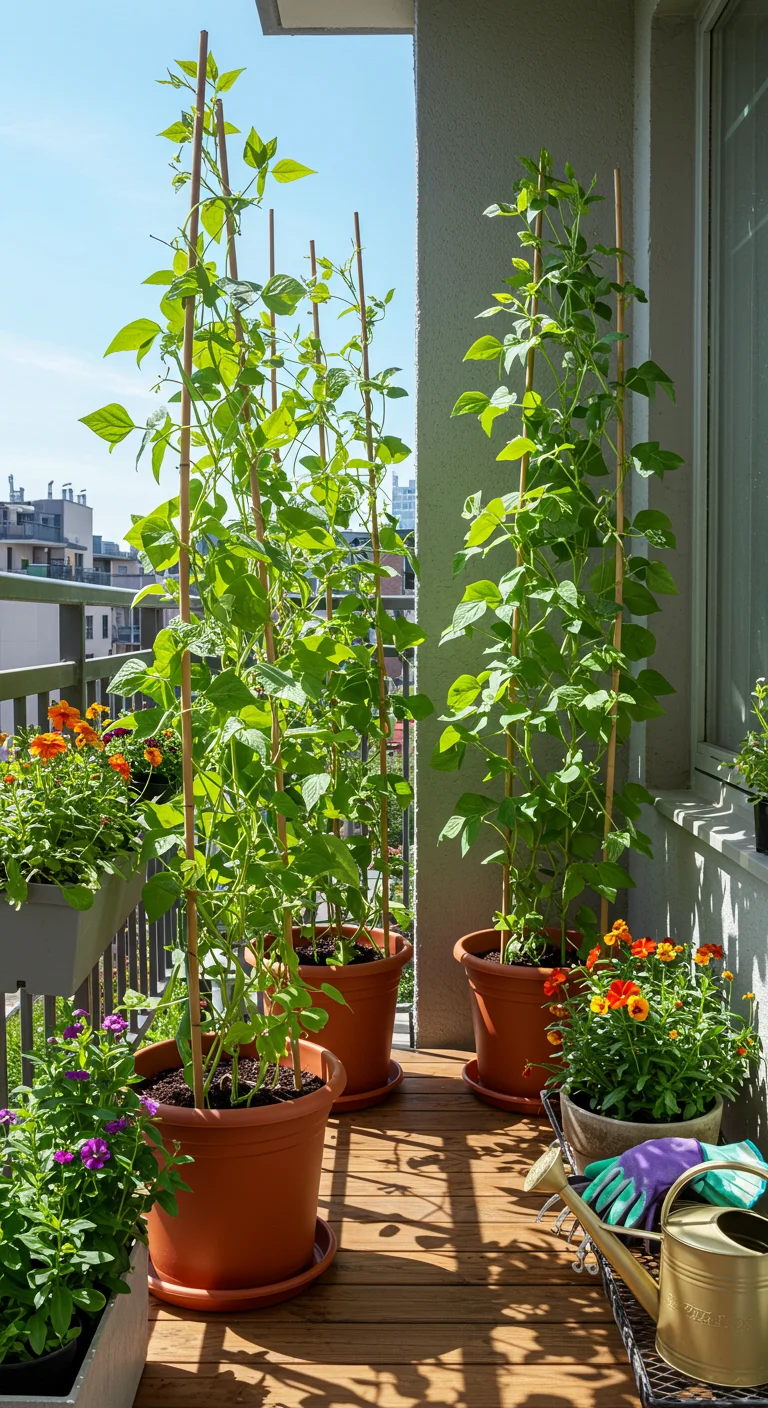
Growing pole beans on your balcony is a fantastic way to maximize vertical space while enjoying fresh produce. These climbing plants can reach heights of 6 to 10 feet, making them ideal for pots and containers. Start by selecting a sturdy, tall trellis or a bamboo pole, which should be placed in a large pot filled with nutrient-rich soil. Ensure the pot has adequate drainage to avoid root rot, and water the beans regularly, especially during dry spells. Pole beans thrive in sunny locations, requiring at least 6-8 hours of sunlight daily. Additionally, consider companion planting with crops like corn or squash to optimize your garden’s efficiency and yield. With proper care, you’ll be rewarded with a bountiful harvest that not only adds greenery to your balcony but also provides delicious, homegrown beans for your meals.
10. Zesty Herbs: The Best Container Varieties for Flavor
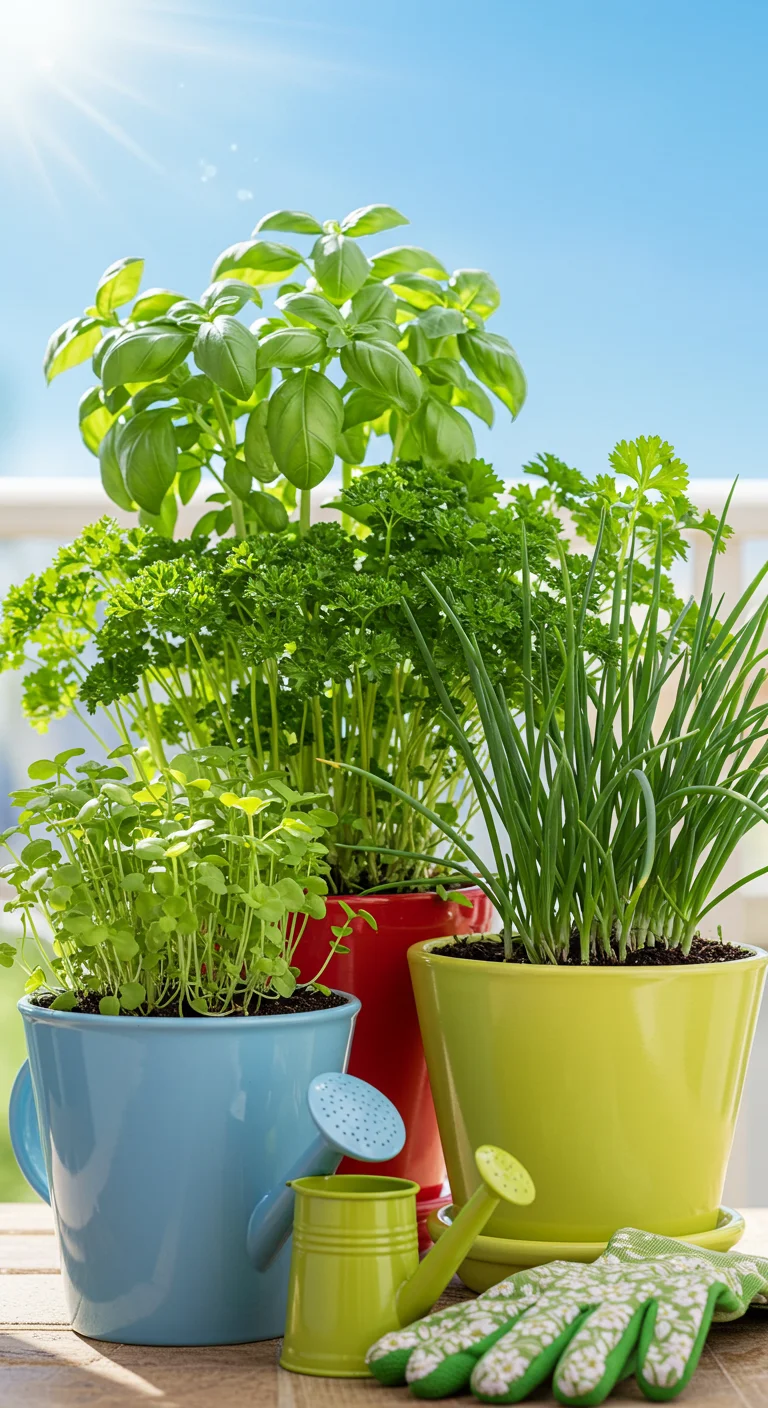
Zesty herbs are essential for enhancing the flavor of your dishes, and they thrive beautifully in container gardens. Varieties such as basil, cilantro, and parsley not only add vibrant color to your pots but also offer culinary versatility. Basil, with its aromatic leaves, is perfect for Italian dishes, while cilantro brings a fresh burst to salsas and curries. For a touch of elegance, consider growing chives; their mild onion flavor complements salads and garnishes. When selecting containers, ensure they have good drainage and are at least 12 inches deep to allow for root growth. Regular watering and placement in a sunny spot will keep these herbs thriving, ensuring you have fresh flavors at your fingertips all season long.
11. Radish Rush: Fast-Growing Veggies for Instant Gratification
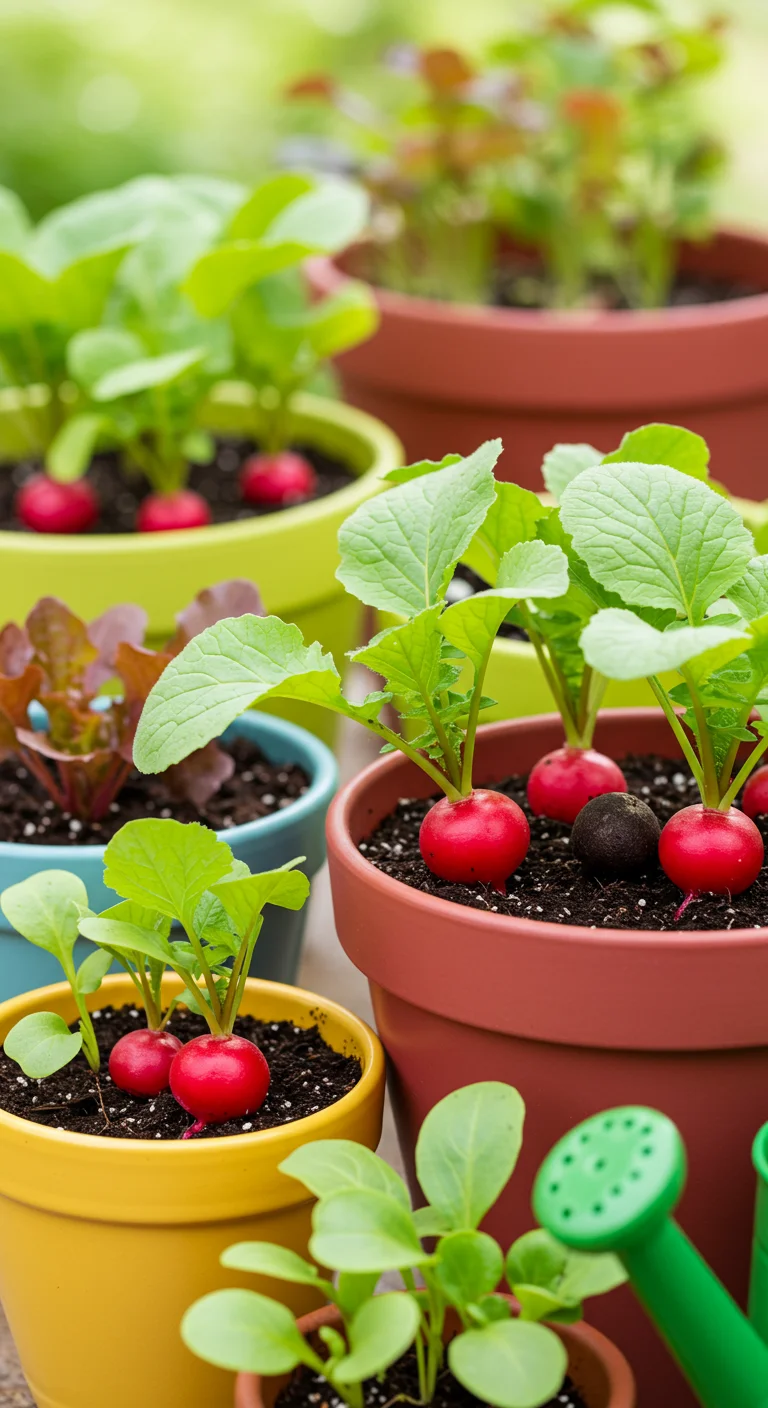
Radishes are the perfect choice for gardeners seeking quick results from their container gardens. These fast-growing veggies can be sown directly into pots and typically reach maturity in just 3 to 4 weeks. With minimal care, including regular watering and a sunny location, you can enjoy a crisp, peppery radish crop in no time. Consider a mix of varieties, such as the classic red globe or the striking black radish, to add visual interest and flavor to your meals. For optimal results, plant your radishes in well-draining potting soil and thin them out to allow for proper growth. This makes radishes not only a fun addition to your container garden but also an instant gratification crop that can boost your culinary creativity.
12. Cucumber Craze: Trellising Techniques for Container Growth
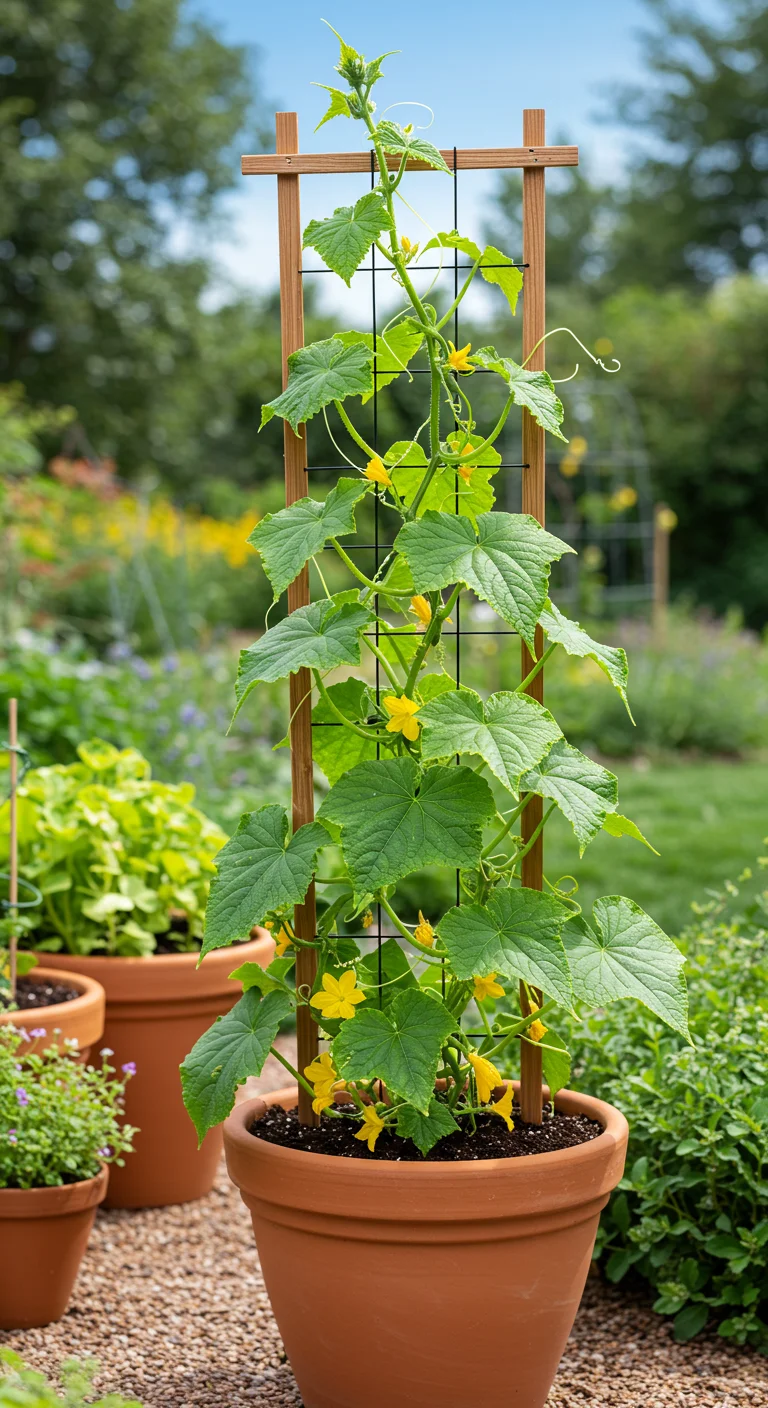
Growing cucumbers in containers can be a rewarding endeavor, especially when utilizing effective trellising techniques. Start by choosing a suitable container, ideally at least 5 gallons in size, to provide ample space for root growth. Incorporate a sturdy trellis system—options like vertical grids, A-frame structures, or even simple stakes—allow cucumbers to climb, maximizing vertical space and improving air circulation. This not only helps prevent disease but also promotes sunlight exposure, leading to healthier plants and higher yields. Ensure your trellis is securely anchored to withstand the weight of mature vines. Regularly prune and guide the cucumber vines onto the trellis to encourage upward growth and easier harvesting, making container gardening a manageable and productive experience.
13. Beets in the Breeze: Growing Colorful Roots in Pots
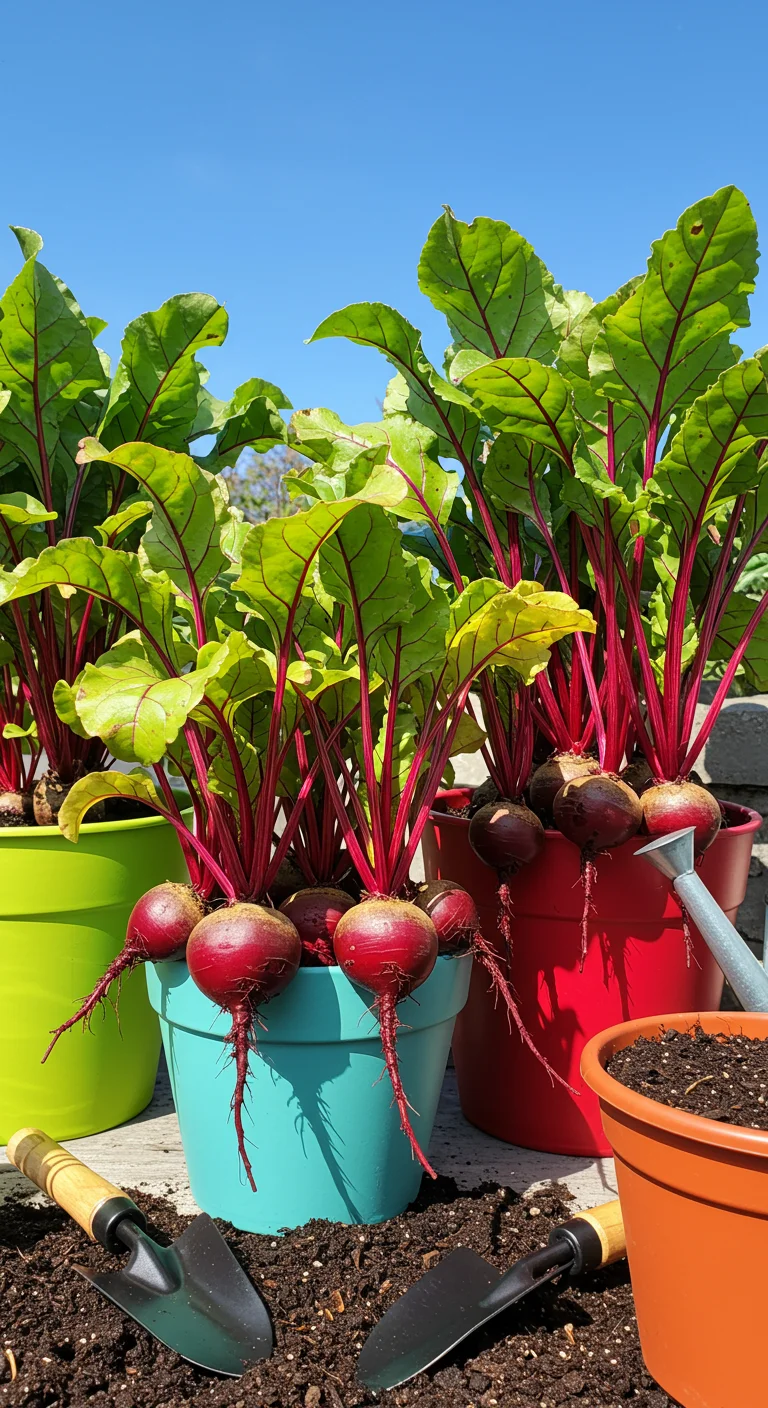
Beets are a vibrant and nutritious addition to your container garden, thriving even in limited spaces. When growing beets in pots, choose a container that is at least 12 inches deep, allowing ample room for their roots to expand. Fill the container with well-draining potting soil enriched with organic matter, which supports healthy growth. Beets prefer cooler temperatures, so planting them in early spring or fall is ideal. Space seeds about 2 inches apart and water them regularly to keep the soil moist but not soggy. To harvest, simply pull them out once they reach about 2-3 inches in diameter, ensuring a colorful and tasty addition to your salads or side dishes. Regularly thinning out seedlings will also promote better root development and yield.
14. Peas in the Pod: Container Gardening for Sweet Snap Peas
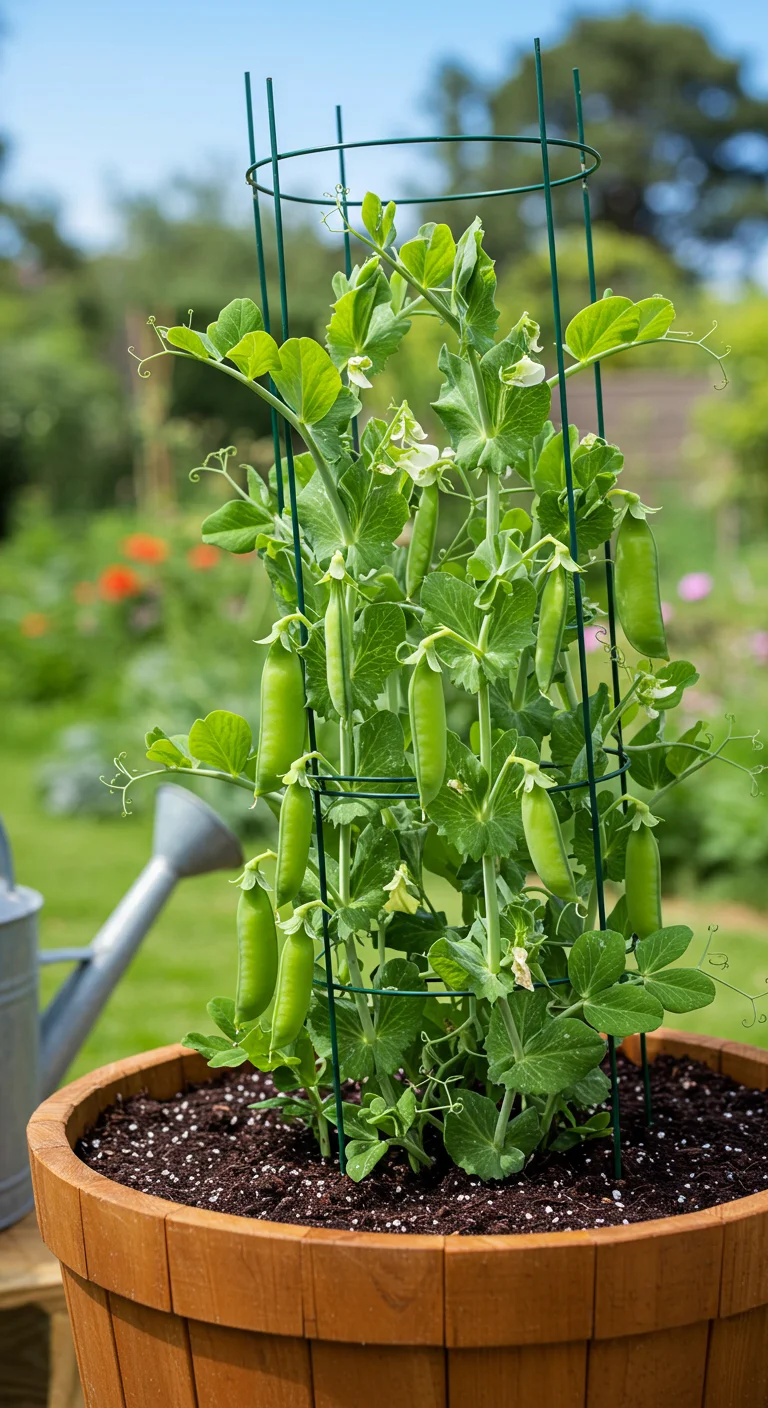
Growing sweet snap peas in containers is a rewarding endeavor that allows you to savor fresh, crunchy peas right from your own garden. Choose a container that is at least 12 inches deep to accommodate the roots and ensure proper drainage. Use a high-quality potting mix enriched with compost to provide essential nutrients. Plant seeds about 1 inch deep and 2 inches apart, ideally in early spring as they thrive in cooler temperatures. To support the climbing growth habit of snap peas, incorporate a trellis or stakes in your container. Regular watering is crucial, especially during dry spells; aim for consistent moisture without waterlogging. Harvest the pods when they are plump and sweet for the best flavor. With the right care, your container garden will yield a delightful crop of sweet snap peas throughout the season.
15. A Harvest of Flavor: Combining Vegetables for a Vibrant Container Garden
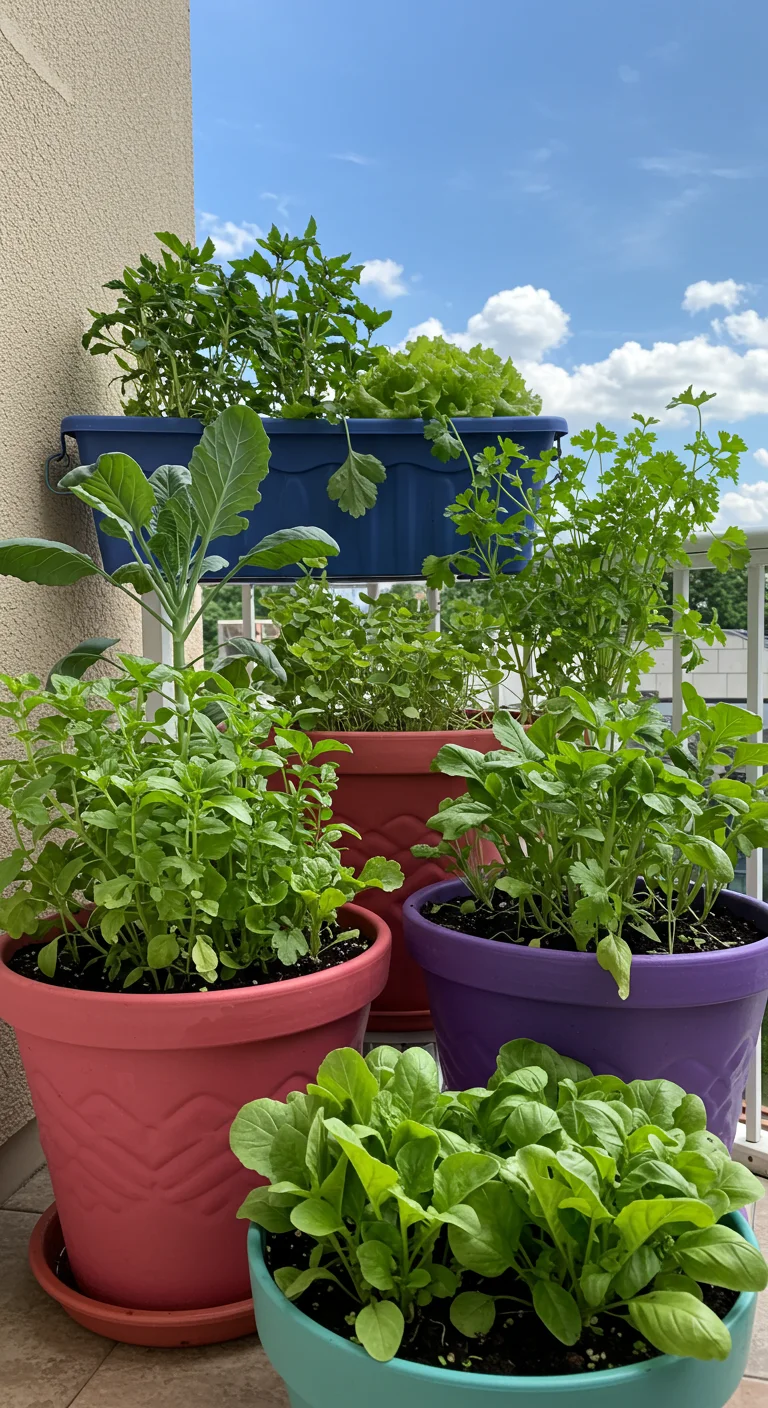
Creating a vibrant container garden is all about combining vegetables that not only thrive together but also complement each other’s flavors and growth patterns. Opt for a mix of leafy greens like kale or lettuce with aromatic herbs such as basil or cilantro to maximize space and create a visually appealing display. Root vegetables like radishes can be interplanted with taller plants like tomatoes, allowing for effective use of vertical space. Ensure you choose pots with adequate drainage and rich, well-aerated potting soil to promote healthy growth. Water your container garden consistently and consider companion planting techniques to deter pests naturally and foster a thriving ecosystem right on your balcony or patio. This approach not only enhances the flavor of your harvest but also creates a stunning visual feast.

